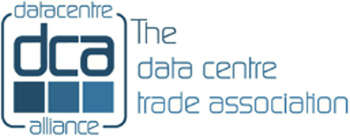×
GDPR & your privacy.
Your privacy as a member is important to us. Recently, rules surrounding privacy have changed, so we have created this manifest for you to read and accept.
It is not possible for you to be classed as an authentic member of the DCA unless you accept the terms, that includes but is not limited to the GDPR statement below.
Please read the privacy policy here.
Making "green" with Bitcoin apparently not so green - by Patrick Donovan, Senior Research Analyst Data Center Science Center at Schneider Electric
Cryptocurrencies, particularly Bitcoin, have been in the news a lot recently due to their extreme volatility and their ability to make overnight millionaires. While some people are touting these digital currencies with no government or financial institution backing as the way of the future, others warn this is all just empty speculation… a giant soap bubble ready to pop. As most of us watch and wait, there have also been stories saying Bitcoin transactions are terribly unsustainable from an energy use standpoint. How could that be so?
Bitcoin and other cryptocurrencies rely on decentralization and distributed IT resources to maintain the integrity of the block chain. In one study, Digiconomist, created a Bitcoin Energy Consumption Index to highlight the energy being used in these block chain transactions. They’re claiming a SINGLE transaction consumes 306 kWh of electricity, which is roughly enough to power 10.35 U.S. households for an entire day. To give more perspective, total annual Bitcoin energy consumption is currently at almost 37 TWh…or about the same as a small country such as Denmark or Bulgaria. Data Centers are springing up all over the place to mine bitcoin.
For me crypto currencies are another reminder and demonstration of how everything in our lives is becoming digitized and power dependent. And this puts huge pressure on all of us in the industry to figure out how to make all this happen in a more sustainable way. I think most people tend to forget or not think about what’s really behind the Wizard of Oz’s curtain that makes all this IT magic happen; i.e., the massive amounts of energy resources and infrastructure needed to make it all work and work reliably. But most of us in the industry (and some outside, of course) know we have to do something. There’s been a growing pressure over the last decade to make things better. And the data center industry has, indeed, come a long way over the last 10 years or so in terms of efficiency…the days of PUE scores of 2 or more are mostly long gone. In fact, my team (the Data Center Science Center) did some research on this and showed over a 10-year period, there was generally an 80%(!) reduction in losses bringing the typical PUE of 1.84 down to a very respectable 1.17. We came up with this by modeling what we thought was a common data center in 2006 and comparing that to one that would be common today. It assumed the newer data center used air containment, cooling economizer mode, and a more efficient UPS. The graph below shows the huge reduction in losses because of these “step function” improvements. Oh, and P.S., the cost per watt to build data centers has come down a lot too!
Graph Showing - 80% reduction in losses bringing the typical PUE of 1.84 down to a very respectable 1.17 over 10 years.
As the demand for and reliance on IT continues to grow, the question for us in the industry must be, “where does the next 80% come from?” Where do we all go from here? How do we solve the energy crisis even as energy demand and the world’s population continues to grow? This is our great challenge. Schneider Electric is dedicated to finding solutions. For those of us in Schneider focused on data centers, we see the next 80% coming from optimizing the broader ecosystem of the data center. It’s not going to come from a percent improvement here and there in equipment efficiency. It’s going to come from looking at the entire architecture and figuring out how better to optimize and manage it.
The next “step function” improvements will come from, we believe, the integration of renewables & energy storage, optimization of the load (ie, demand side optimization), improved cooling strategies (ie, liquid cooling & air economization), adapting pre-engineered & assembled infrastructure systems (micro data centers, prefab data centers & free-standing IT pod frames), and software. Yes, software…. but not your father’s on premise, license based software. I’m talking about cloud-based software, such as Schneider Electric’s EcoStruxure System Architecture, that takes advantage of IoT technologies and big data analytics to provide unparalleled actionable insights. And it’s this evolution in data center software management that will put us further down the path towards automation, machine learning, and AI in the data center.We will be talking much more about these exciting improvements and trends in future blogs and white papers.
Data Centre Alliance, Unit 2, Fordbrook Business Centre, Marlborough Road, Pewsey. SN9 5NU
UK Telephone:
+ 44 (0)845 873 4587
+ 44 (0)845 873 4587
Email:
[email protected]
[email protected]
© Copyright 2025 • All Rights Reserved • Terms & Conditions • Privacy Policy



